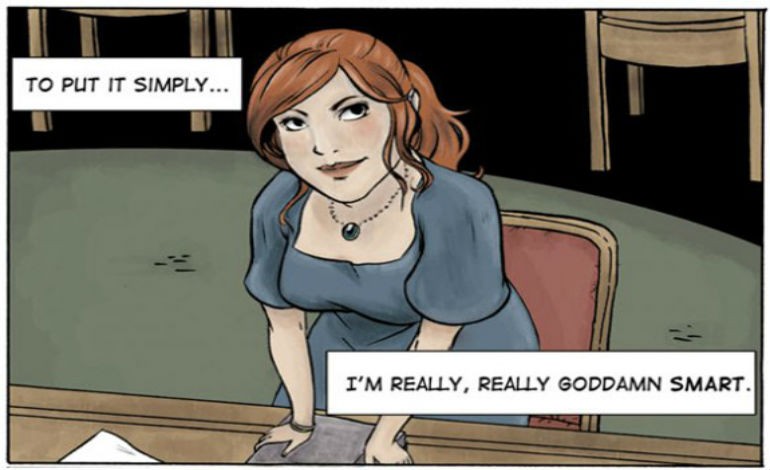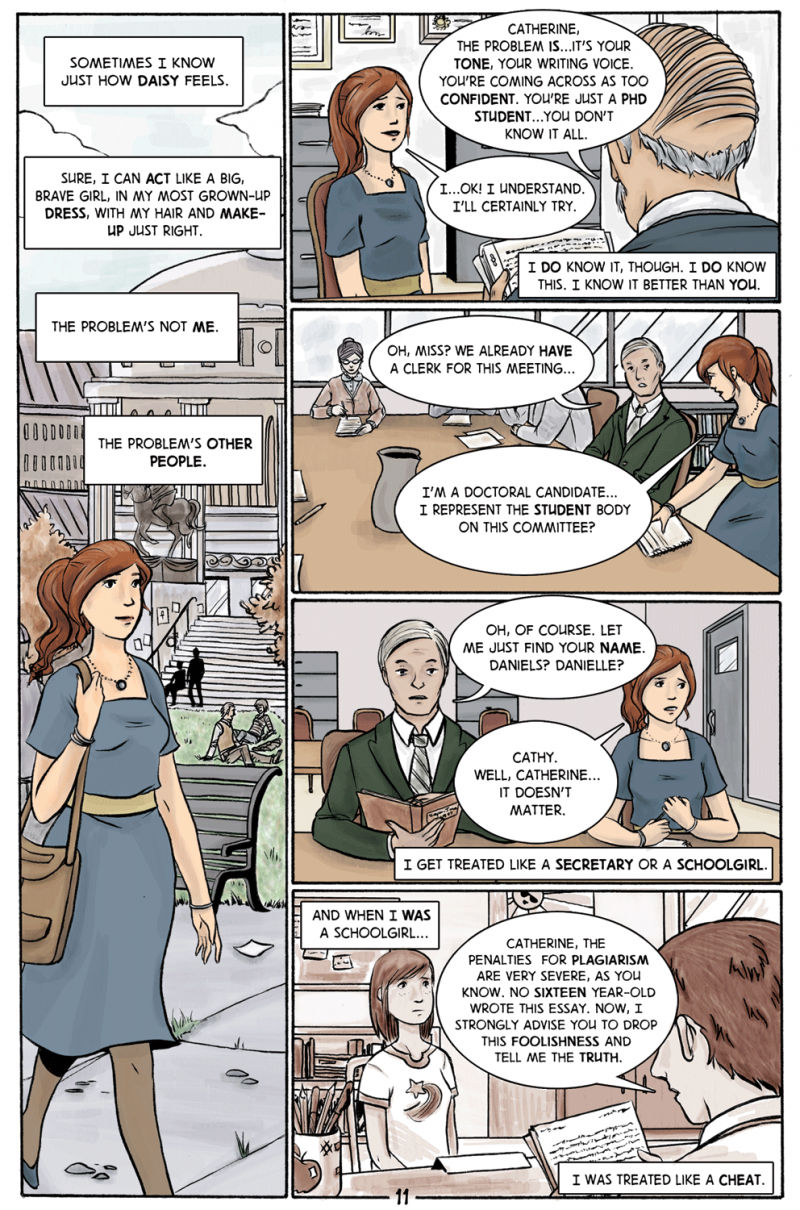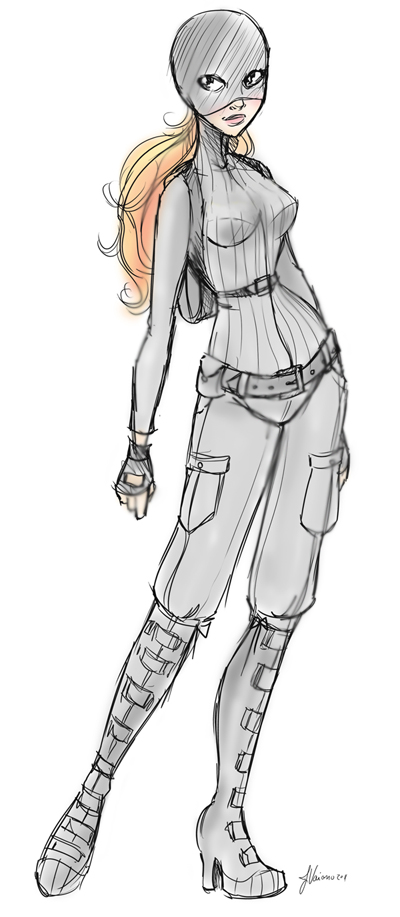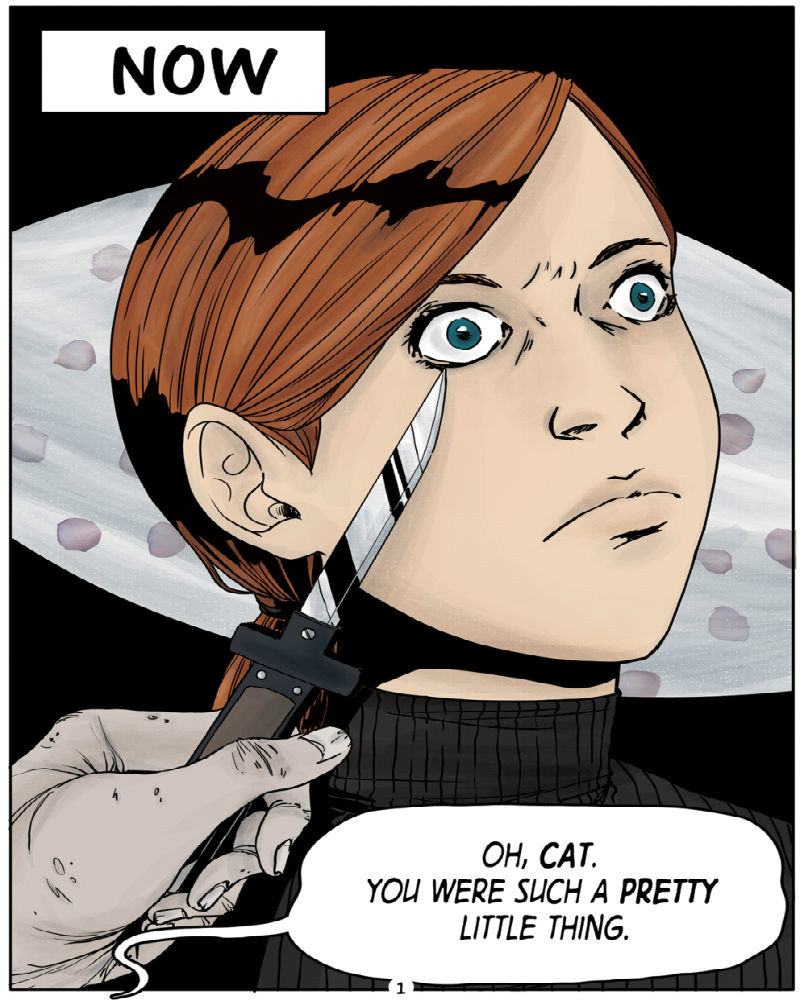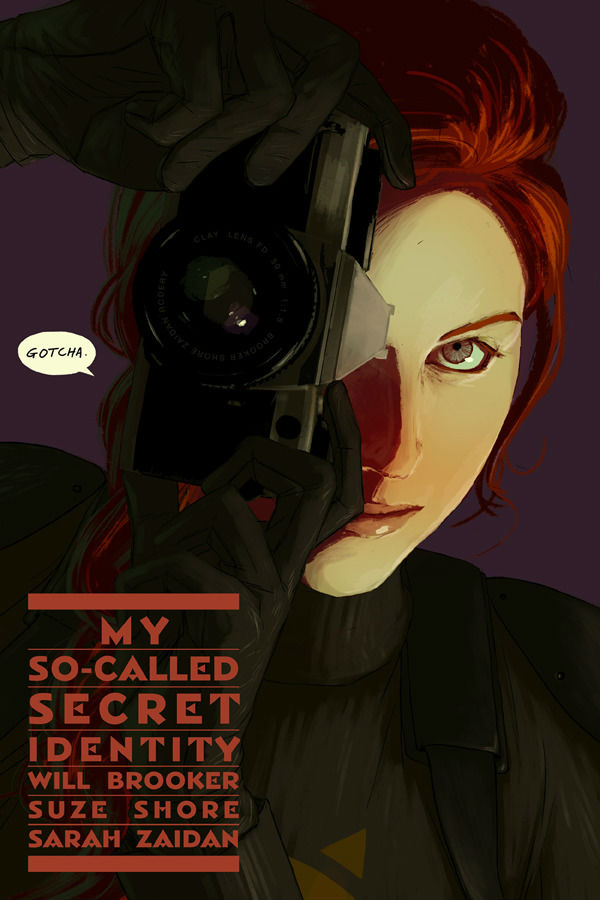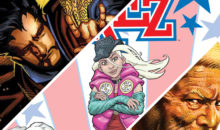My So-Called Secret Identity: An Interview With Will Brooker – Part 2
(Ed’s Note: This is part 2 of our interview with Will Brooker. To read part 1, click here.)
GEEKPR0N: So now, moving away from what forces Cat can represent, here is the question on my mind with regards to a core part of MSCSI. In your interview with Julian Darius you mentioned that you had a considerable number of female beta-readers. One thing I have always been told as a writer is that the best way to write women is to actually interact with women you know, ask them about their experiences, and listen. What kinds of advice did you get from them, and was there anything suggested to you in particular that really stood out for you in some way?
Will Brooker: A ‘considerable number’ might have been a vague response. To be more precise, three female fan-academics read and gave me feedback on the whole script, around Autumn 2011, before it was even drawn. They were Kate Roddy, Suzanne Scott and Carlen Lavigne, who then put together a scholarly interview-essay about MSCSI — again, this took place while Issue 1 was still in progress. It’s published here http://journal.transformativeworks.org/index.php/twc/article/view/476/362c
I also talked online with YA author Karen Healey while I was developing the ideas for MSCSI, and I specifically asked my friend Prof Bambi Haggins to read the script for Issue 3, and comment critically on the way I’d written the African American woman, Connie Carmichael.
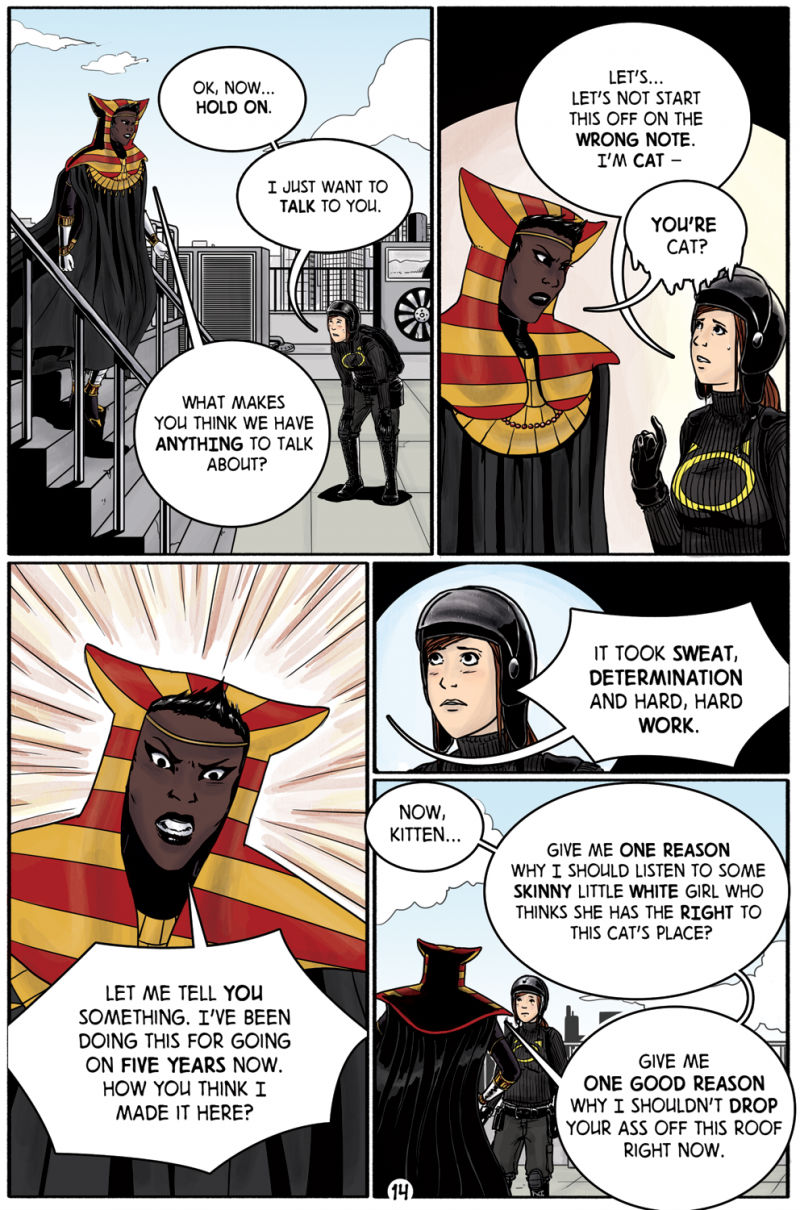
Cat Meets Sekhmet MSCSI
And of course, Sarah Zaidan and Suze Shore read the scripts very carefully, and often gave me feedback and suggestions.
It’s hard to recall precisely what I was given by each person, but I remember Karen Healey steered me in a very important and valuable direction, away from a more conventional fate for Dahlia Forrester. Bambi Haggins tweaked some of Connie’s dialogue, and contributed one particular, small but vital point: she asked whether Cat was only realising now that she couldn’t inhabit Connie’s history, but could only observe it from outside. So I added two words, ‘of course’, to that caption, to indicate that this notion wasn’t suddenly occurring to Cat. Bambi also asked why Connie was let go from her role on a successful musical, which prompted me to provide a little more detail — she’d been replaced by a lighter-skinned performer, Stella Shelley — which in turn helped me to develop the backstory between Connie and Stella (who we now know is fellow costumed artist Miss Sparkle).On a similar note, Angel Kumar has written a detailed backstory for our newest character, British Asian consulting detective Radhika Shere.
At least one of the incidents of sexist micro-aggression that Cat experiences in Issue 1 comes directly from a conversation with Sarah, and is drawn from a situation in her own life. I think it’s when her college tutor accuses her of cheating, because her work is too good. I’ve had one conversation with Suze in real life (and several online) and — over a few bottles of wine — we worked out loads of cool ideas for future MSCSI scenes and images, which fortunately I wrote down next day. Inevitably, the artists contribute a great deal — they are essentially co-creating the world and the characters, and their authorship of MSCSI is hard to quantify. That goes also for the guest artists. It was Rachael Smith who first drew Radhika Shere, for instance, and Laura Callaghan is currently drawing a portrait of her with Cat for the deluxe edition.
More generally, though, a lot of what happens in MSCSI is constructed from conversations with women, and just broadly, experiences with women — living with and listening to women. I’ve named the most specific and direct examples above, but if Cat and the other female characters in MSCSI are convincing and speak to people — if my writing shows any understanding of women’s identity and relationships, and experience in society — then that is thanks to the women in my life, from my mother to my students.
GP: I can imagine what Dahlia’s fate might have been and as a fan I, for one, am glad that Karen Healey helped her avoid it: whatever else might happen. Thank you for the link to the interview-essay with your colleagues and for pointing out that in addition to your artistic collaborators such as Suze Shore and Sarah Zaidan, that the women in your life have had other roles in addition to beta-reading for MSCSI.
Here is a more plot and character-related question: something I actually wondered about in my own review of MSCSI Issue #4. Getting back to Cat, just what were her intentions when she approached Carnival’s agents? Did she realize that, sooner or later, he was just going to bring her to him anyway and wanted to pre-empt it: to find some kind of advantage and perhaps disrupt a planned part of the theatre?
WB: When Cat approached Carnival’s people, it was out of a sense of inevitability. She spends that issue, essentially, touring everyone she can think of who might help her (not Sekhmet because I think she’s fairly clear of Connie’s position, just as she is about Urbanite’s) and realising, ultimately, that nobody’s going to do this but her.
As for what she intends to do: essentially Cat just hopes she can have some effect by showing Carnival she knows what’s going on, and confronting him to ask what exactly he wants. She’s solved his newspaper puzzle. It’s as if they were already having a conversation, which she realises he began, with a public message directed specifically at her. She knows he wants to connect with her. She hopes that by engaging, she can satisfy his curiosity and match him intellectually, and, by putting herself into the system as an obstacle and new, unknown element, stop him from carrying out his next move. She knows she’s the wild card, and she knows, or hopes, that she can throw off this course of events, this ‘domino’ game that otherwise is just going to play out as it usually does, with Urbanite making a lot of empty noise and thousands of people getting hurt.
She knows Carnival fascinated by her intelligence, so it’s not as if she’s planning on a big boss physical fight: she can handle herself against one or two half-hearted thugs, as we see, but she’s no match for his gang. Basically it’s like Batman with Joker in The Dark Knight: ‘you wanted me… here I am.’ She can’t see any other move to make, and nobody else is going to help her.
Coincidentally, there’s a very similar dynamic at work between Batman and Riddler in the current Zero Year,by Scott Snyder: Riddler setting challenges, and Batman solving them, then (as is Batman’s nature) roaring furiously ‘what do you want now, I played your game, I found the answer..this is the end, it’s over.’ Riddler then, at the end of the penultimate episode of Zero Year, simply shows that he still holds the cards and that the game ends when he decides it. It’s the same thing with Carnival. He doesn’t want the game to end. He’s enjoying this new development very much.
GP: It seems this game began a while ago: even when you get back to the creative aspect behind your series. In your article From Killer Moth to Killing Joke: Batgirl, a life in pictures on Mindless Ones, you pitched a hypothetical comics series for Batgirl that ended up evolving into your own original My So-Called Secret Identity. Since then, you have also mentioned how fashion magazine aesthetics inform your comic and the site that hosts it. How did your method of writing scripts evolve from that point and how does this inform the creative collaboration between your artistic partners? Do you write down general ideas or paneled scenes? Or do they panel it out and add details of their own? And to what degree does fashion inform your aesthetics, your creative process(es), Cat’s life and Gloria City?
WB: I think of my method of writing comics as moving from macro to micro. For Volume 3, for instance, I have a central idea and a visual in my head of a few key scenes, which I see as comic book pages of completed art. That’s it, in terms of the third volume.
For Volume 2, I have a plotted out set of issues (1-5) with a description of what happens in those issues. Some of the description is far more detailed, some of it is sketchy. For instance, one page might actually be written in terms of panel breakdowns and captions, and another few pages might be something far more shorthand, like ‘Cat goes home — tells others what’s happened — domestic interaction here, quarrel, “you’re meant to be my clone”.’
So, first there’s a central idea of what’s going to happen, and some glimpses of the key moments; then I’d break down that plot into 5 episodes, and then I’d break down the episodes into pages. The final step is breaking down the pages into panels.
All of volume 1, of course, is written in full. I have a clear sense of how each page looks in my head, which I’m then simply trying to convey to the artists through direction and description, sometimes with links and visual references, and sometimes just in terms of prose and ‘shot’ instructions, like a film script.
Here’s an example, from issue 4.
My So-Called Secret Identity
Part Four: Anti-Life
PAGE 1
CAPTION [and these should be DISTINCT and different FONT from ‘CAT CAPTIONS’]: NOW.
Splash:
Close-up of Cat’s face. She’s frightened but frozen, not wanting to move an inch. There’s a knife-point resting against her eye, the blade held in an old man’s hand. There are traces of smoke and purple blossoms in the air.
This page is all about Cat’s expression – stiff, rigid, staring at the man holding the knife, but thinking, thinking, thinking: how did I get into this, how can I get out of it?
Voice off: Oh, CAT. You were such a PRETTY little thing.
PAGE 2
CAPTION: 30 YEARS AGO.
Four panels, with TV-screen rounded corners
1. We are seeing black and white, grainy footage of ‘Your Lucky Day’/’La Vida es un Carnaval’ (both logos are visible in the studio set), a TV show from the 1960s starring Feliciano Bonifacio Carnival as the presenter, making kids’ dreams come true.
Carnival is around 50 years old here, slightly bizarre and eccentric but not sinister.
Perhaps a leopard-skin coat, a big cigar, trademark glasses, flamboyant hand gestures.
Carnival is sitting in an elaborate, baroque throne, with kids around him – like a strange fairytale king (could even be wearing a kind of crown) or a fantasy school-teacher. One little boy is sitting on his knee, in a ‘talking to Santa’ pose.
CARNIVAL: OK, OK. Órale, chaparritos! Who do we have here, it’s BILLY BENSON from CENTRAL CITY, isn’t that right Billy? And what do you want most in the world, BILLY?
BILLY [small voice] Run fast, like MR SWIFT.
2. CLOSER on CARNIVAL and BILLY.
CARNIVAL: OK, OK, well is that so, well between you and me, Billy, I’ve got a little SECRET, if you can KEEP it, oh-ho. Would you like to guess who’s HERE to HELP me.
BILLY: … yes.
3. Now onto the stage springs Carnival’s sidekick, a teenage boy in a ridiculous uniform reminiscent of Burt Ward as Robin, or a pantomime Peter Pan:
No cape, but a tight top and little hotpants, pixie boots, predominantly red, yellow and green. His name is SONNY JIM.
SONNY JIM: I heard someone wants to run FAST, like JACK SWIFT, the FIRST OF THE FLEET?
CARNIVAL: Yes, yes, do you know who this is, BILLY and all the boys and girls here and at home?
BILLY [QUIET] Sonny Jim
KIDS: IT’S SONNY JIM!
4. All three together, looking at camera, as kids around go wild. Carnival is performing jazz hands
CARNIVAL: OK, OK, I’ve got something to tell you, Billy, this is SONNY JIM and you know what, it’s YOUR LUCKY DAY!
PAGE 3
SIX PANEL GRID
CAPTION: ONE WEEK AGO.
1. We’re in Castor’s café, from issue 2, back with Cat and Enrique. There are strong echoes of their earlier scene, in the framing and rhythm. Differences between then and now will only come across subtly. [She is in the Hanie Mohd-designed Fall sweater outfit – skirt could be longer, though]
Cat has clearly just asked Enrique something, and he is replying absolutely firmly:
ENRIQUE: NO.
2. CAT: It’s the ONLY –
ENRIQUE: No way. And YOU should forget about it too. If my BOSS sees you again, he’s going to put you in BEDLAM.
3. In the background now, behind them, we start to sense what’s different about the café this week. The front windows are half-covered in flyers and posters that we can read, backwards: they say ‘LOST’, ‘MISSING’, ‘LAST SEEN’, with text and photographs of people underneath.
CAT’s anger is now sparked: she’s not going to take this.
CAT: Your BOSS is quite literally a TOOL. And what does that make you?
ENRIQUE is silent.
4. In this frame we get a better sense of the posters, see a newspaper being read by another patron – ‘MAJOR DECLARES MARTIAL LAW’.
ENRIQUE: Anyway, you have NO chance, the way things are now, after DEMOS. The CURFEWS, the POLICE BLOCKS, you wouldn’t even be able to GET to him.
5. CAT stands up, leaving her coffee on the table. We can see the door (and the plate windows with their posters and flyers) in the background here. Enrique looks up at her, seeming helpless, slightly miserable.
CAT: Well, SOMEONE’s got to do it, Enrique. SOMEONE’S got to at least TRY.
CAT: I guess I’ll SEE you.
6. Same framing as #5. She walks briskly out of the door. Enrique stares at the table.
In terms of fashion and design, I would say the artists add a great deal. I give a sense of what I’d like and they furnish the details. I had a great experience working with Stylist magazine, as their fashion editors actually sent me links, at my request, of current items that the characters could wear — an outfit for Dahlia, for instance, a t-shirt for Cat, various choices of shoes — and I picked my recommendations to send them to Rachael Smith, who drew that strip.
Most of the artists seem to have a very keen sense of clothes and design though, and enjoy the opportunity to provide our characters with convincing, real-world outfits, with a lot of plausible detail.
GP: Now, just for fun, what do you think would happen if a superhero like Batman or Superman found themselves in MSCSI? Or if Cat found herself in the Marvel or DC Universe?
WB: Batman would basically stomp, in the MSCSI universe. He would destroy pretty much anyone we’ve encountered so far. The Major and Urbanite are a joke compared to Batman. The Major is like Donald Trump with a cloak. He’d have private security but he’s no more threatening to Batman than the Penguin, at best. Urbanite is (as far as we’ve seen, at least) a really rich hobbyist, who can just about intimidate Cat if he swoops up on her with no warning, but really would be no match for Batman on any level. Sekhmet going up against Batman is like Solange Knowles going up against Batman.
As for Cat — I think she would intrigue him if he saw evidence of the way her mind works. I can imagine them developing a relationship something like Batman and Carrie Kelly or Harper Row — he begrudgingly learns to admire and respect her, and warns her to stay out of his dangerous business but probably tries to find a role for her — either in the ‘Batman Family’ or Batman Incorporated, depending what continuity we are in. Cat has nowhere near the strength, martial arts ability, athleticism or equipment of any of the Batgirls, so she would never work in that precise role, but she could be a kind of Oracle figure, a researcher and thinker. Maybe Batman could use an academically-trained theorist on his team. I think Cat would get along really well with Barbara in her Oracle role.
I don’t think Superman would be especially bothered by anyone in Gloria, including Cat. She’s very clever but he’s a Kryptonian and can presumably think at a speed, and on a dimension, beyond any human being. She doesn’t have the low cunning of Batman — or the wealth, or the science and technological abilities — so she wouldn’t pose that kind of risk to him; she’s not going to manufacture a Kryptonite ring. Yes, she no doubt notices things he doesn’t, and connects things in ways he doesn’t, and interprets the world in ways he doesn’t, but if we assume Superman can tap into a consciousness on the level of Dr Manhattan, I think the same rule would apply that she’s about as remarkable to him as a really clever small mammal. Granted, this is not always how Superman is written, but that’s how I personally feel Superman would operate — as a near-omniscient, near-omnipotent being who must have to scale down a lot to engage with human beings at all. Alan Moore’s Superman from the 1980s Swamp Thing series comes closest to this depiction, I think, though Morrison’s All-Star Superman also captures that benevolent, generous godliness.
However, we have seen instances (again, written by Alan Moore) where Superman and Batman face off against Swamp Thing, and it’s clear that they both have a healthy respect for plant elementals. So, given that there are characters of that nature in the MSCSI universe, they would, I think, be the only ones to present Superman or Batman with a genuine challenge.
GP: Now, here is the most important question. My So-Called Secret Identity has a Kickstarter Campaign that is going to end in about six days. In addition to funding, how else can fans support your Kickstarter and make more people aware of it? What can current and potential fans hope to expect from MSCSI? And what are some of your plans for the future?
In terms of the Kickstarter, I’d ask people simply to circulate our campaign on social media as much as they can, and also to spread the word by whatever methods they can — including just telling friends, family and colleagues. We get a lot of signal boost from generous celebrities and big-name professionals on twitter, so if our fans can put the link in front of people with a high follower count and profile, and ask for a retweet, that’s really helpful.
With about £1000 to go and one week until deadline, I do now feel we’re going to hit target; and I’m going to release details of our stretch goal very soon. But we do still have to reach that target, or MSCSI simply isn’t going to happen.
If and when we do hit the magic £8.5k, I’ll be sending the script to the art team and they’re going to start work on it immediately. We’re planning to have Issue 5 completed by September-October, and send the printed books out around November. The deluxe edition really will be very special, with full-colour art from an incredible range of guest creators, and we have a number of limited, signed prints of selected portraits and pin-ups.
In 2015, I’m hoping to develop MSCSI Volume 2, possibly as a single graphic novel of about 100-120 pages. But really, everything now depends on people pledging that final £1000.
GP: You can find Issues 1-4 of My So-Called Secret Identity, along with other goodies, on its website, but in order to see Issue #5 please support the Kickstarter Campaign. I’ve asked my questions. Now perhaps you have some of your own … along with a map to place where you can begin to have them answered.

